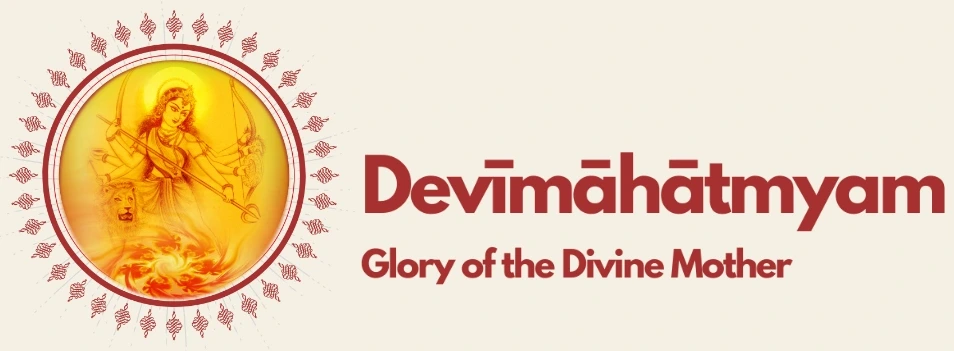Nyāsaḥ
Nyāsa means a pledge or a deposit that is entrusted to one’s care. One must begin to identify oneself with the Mantra one worships and this is done by completely surrendering the individuality, the sense of I-ness and my-ness in all parts of one’s being and entrusting it to the Mantra which is the sound-body of the Deity. One must open oneself to the Mantra-force and allow it to have its play in the being. This has to be done progressively and the process is adopted by the Nyāsa.
The Sādhaka places his fingers or palm of his right hand or of both the hands on the various parts of the body reciting the appropriate parts of the Mantra so that the Mantra is united with the body, limb by limb. This is known as Aṅga nyāsa. When the parts of the Mantra are assigned to the thumbs, index fingers, middle fingers, the fourth and little fingers and the front and back of the palms, the assignment is known as kara nyāsa. By entrusting the fingers of the hands and the other limbs of the body to the appropriate limbs of the Mantra, the whole body and through it the whole being becomes pledged to the Mantra. Once the Nyāsa is done, the entire being of the sādhaka belongs to the Divine and the sādhaka has no claim over it. He deals with himself as he would with a trust property. He performs the japa of the Mantra with this attitude and no wonder Mantra done with the proper Nyāsa, is more effective.
Ekādaśa Nyāsas, eleven Nyāsas, are prescribed for the Saptaśati and Navārṇa Mantra. We have already stressed that Saptaśati and Navārṇa Mantra are not distinguished as separate. The Ṛṣi, Chandas, Devatās etc. are same for both.
The first of the eleven Nyāsas is the Mātṛkā Nyāsa which is said to confer on the sādhaka the same form of the deity, devasarūpyaprada. Mātṛkās are the fifty letters of the Sanskrit alphabet from a to kṣa and they are called Mothers Mātṛkās, because they give birth to the sound-body of the deity. Nyās is done on different parts of the body with the letters of the alphabet which form the corresponding parts of the body of the deity. The second is the Sāraśvata Nyāsa capable of dispelling inertia jāḍya vināśaka. It is done by placing the seed letters Aiṁ Hrīṁ Kliṁ on the fingers and limbs of the body. The third is the Mātṛgaṇa Nyāsa, seeking the protection in all directions from the hosts of mothers like Brāhmī, Māheśarī , etc. It is said to confer victory in the triple worlds, trailokya vijayaprada. The fourth is Nandajādi Nyāsa. The incarnations of the Divine Mother are called to protect the body east, west, north, south, from head to foot as well as from foot to head. This Nyāsa is said to remove old age and death, jarā mṛtyu hara. The fifth fulfills all wishes sarvakāmaprada and goes by the name Brahmādi Nyāsa. It is also known as abhedya pañjara the unbreakable cage. Brahmā, Viṣṇu, Śiva are invoked in the parts of the body, from foot to navel from navel to neck and from there above, respectively. Their vehicles, the swan, the falcon and the bull are invoked in the feet, in the hands and in the eyes respectively. Ganeśa is sought to protect the whole body while the sides are left to the care of Hari who is all Delight. The sixth Nyāsa is the Mahālakṣmyādi Nyāsa, known also as the Vaikṇṭha sukha kṛt conferring the bliss of Vaikunṇṭha. Here the deities, Mahālakṣmī, Mahāsarasvatī and Mahākalī are invoked. This Nyāsa is said to lead to the goal of Good, saḍgati prada. The seventh and eighth are Mūlākṣara and Varṅa Nyāsas. They are done with the letters of Navākṣarī, from Brahmarandhra down to genitals and then in the reverse order. They are famed as destroyers of diseases and dispellers of miseries, roga kṣayakara and duḥkha nāśaka. The ninth is the Mantravyāpti Nyāsa. The sādhaka passes his fingers all over the body reciting the Navākṣarī. This he does from top to bottom, bottom to top in all directions making yāpaka eight times. This helps him to reach the Divine, devatā prāptikara. The tenth is the Saḍaṅga Nyāsa acting as a charm in the triple world trailokya vasakara. Navārṇa Mantra is used for the Nyāsa. Then we come to the last but not the least Nyāsa, because this eleventh Nyāsa is said to give the fruit of all the ten Nyāsas1: this is known as Khatginyādi Nyāsa and extolled as the giver of all protection, all wants, remover of all undesirable things, sarva rakṣākara, sarvābhiṣṭada, sarvāniṣṭahara. The five slokas beginning from Khatgini śūlini ghora are recited and Nyāsa is done on the whole body thinking of the first seed sound Aiṁ, in black colour. The four slokas beginning from Śulena pāhi no devi are recited and Nyāsa is done on the whole body thinking of the second seed - sound Hrīm as effulgent as the rising Sun. The five slokas beginning from Sarvasvarūpe sarveṣe are recited and Nyāsa is done on the whole body, thinking of the third seed-sound Klīm as white crystal.
1. अयमेकादशन्यासो दशन्याससमो भवेत्।
तत्फलं लभते सम्यग्स्मिन्नेकादशे कृते॥
Having done these eleven Nyāsas, one proceeds to perform the Aṅga Nyāsa and Kara Nyāsa of the Navārṇa Mantra fences the quarters and tells the three Dhyāna slokas beginning with khaḍgam cakra gadeṣu, akṣasrak parasugadeṣu and ghaṇṭa śūlahalāni.1 Then he does the japa and dedicates it to the Divine Mother by the following verse:
“Thou art the protector of the most occult secrets. Pray accept the japa done by me. O Supreme Sovereign, May accomplishment come to me by Thy Grace.”
1. These are explained at the beginning of the three episodes of the text.

